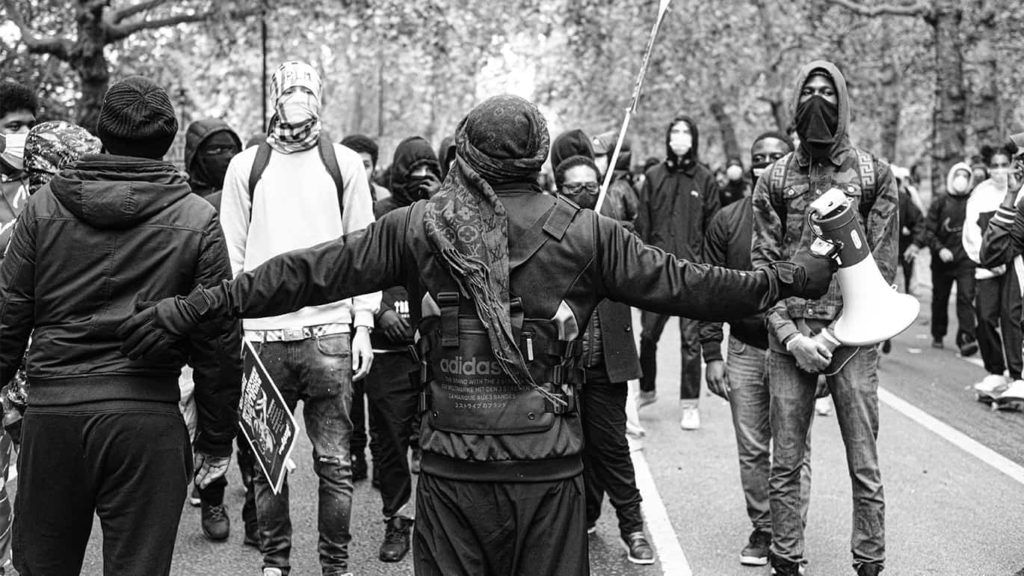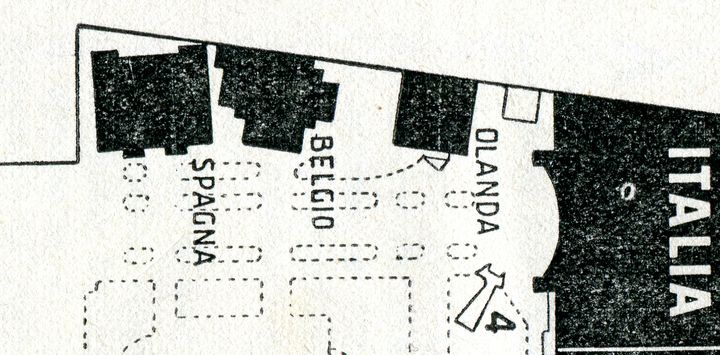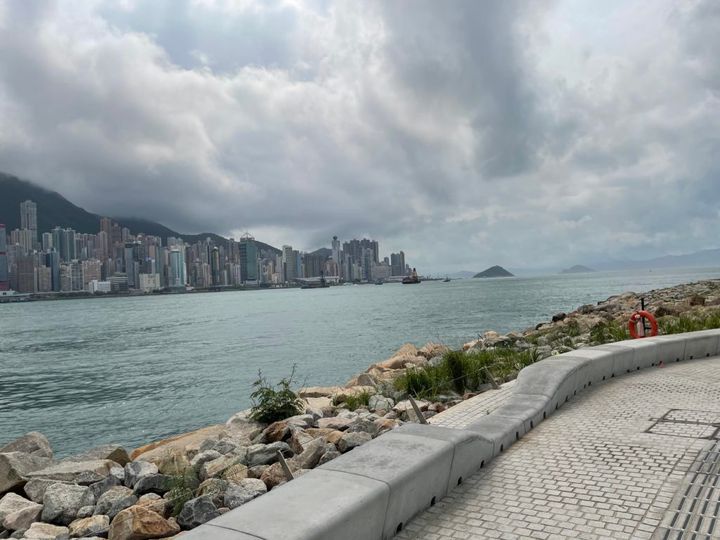The murder of George Floyd suffocated by a police officer exposed the serious problem of racism and police violence in the United States. But this way of looking at it is too simplistic. Let’s not forget that this policeman was a university graduate and that his crime, like many similar ones, is only one instance of racism in the US. It should be noted that racism is historically constitutive of that society, it is structural, and it permeates all its institutions and is reproduced through them.
I wrote these lines for the website of the UNESCO International Institute for Higher Education in Latin America and the Caribbean just a few weeks after this racist murder, when newspapers and TV channels in this part of the world represented racism as if it existed only in the United States. But now I must ask: Isn’t racism constitutive of all Latin American societies?
Isn’t it also structural in our societies, permeating all the institutions and reproducing itself through them? Isn’t it also expressed in violent acts, including homicides, by security forces, especially against indigenous and Afro-descendant communities? Aren’t some of the security forces officers also graduates of higher education institutions? Haven’t they taken courses on human rights? Haven’t other higher education graduates participated in the delivery of these courses?
Isn’t racism in Latin America also present in other forms of institutional violence, maybe less evident, in health, education and justice systems? Isn’t it inherent in the educational programs provided by university graduates to future professionals in law, health, architecture, engineering, agriculture, economics and diverse social and humanistic disciplines? Doesn’t it creep into training modules offered to teachers at all educational levels who will teach the “official history” and foster values that – judging by the results – do not help in building democratic, responsible and environmentally sustainable societies?
Unfortunately, all these questions must be answered affirmatively. Yet, many in our societies are not aware of racism, because it has been naturalized. The same mass media in Argentina, Chile, Colombia, Guatemala and Mexico that gave extensive coverage to the murder of George Floyd and highlighted the racism of US society failed to do the same in regard to many similar crimes committed in our lands.
The journalists, editors and columnists who analyzed this crime as if it were a problem exclusively “Made in USA” are also university graduates just like the police officer who murdered George Floyd. Some media, of course, emphasized the link between the racist murder in the US and many racist murders in Latin America, but as is happens these are the media with less impact on public opinion. The majority of people just reproduced the interpretations of the mainstream platforms and publications.
Why did this happen and why does it continue to happen? Because racism is a constituent element of our societies and of the world in which we live; it is reproduced in various institutions, practices and discourses.
Racism is an ideology that classifies human beings into races. Some races are believed superior and others are deemed morally and intellectually inferior. This ideology was at the basis of the colonial deployment undertaken by coalitions of European monarchies, armies, administrations, economic power groups and institutionalized religions that subjugated not only peoples from other continents but also Europeans.
The independent republican states in Latin America (a region whose denomination affirms its European “heritage”) instead of ending this ideology were built upon it. They reproduced it in their racist policies and practices. For example, promising to end “barbarism” and bring “civilization,” the governments of these republics continued to march over indigenous territories and distribute the lands of indigenous communities among political and economic power groups. To make matters worse, they charged the Catholic Church with the mission of “saving the souls” of the peoples dispossessed of their land, banished from their languages and spirituality, and kept from sustaining their food and health systems.
Apart from the continuous practices of territorial dispossession, states also use other means to “civilize populations,” such as economic and social policies ensuring “progress” and “pulling out of backwardness” indigenous and Afro-descendant communities. Despite territorial losses, these communities try to live in harmony with what the states have called “environment” and what the states strive to “preserve,” to no effect, from the 1970s.
Moreover, among the key instruments of the reproduction of racist ideology we can count various cultural and educational policies; for example, forced imposition of Spanish language on indigenous communities. Mostly unconsciously, but higher education institutions contribute to these processes.
The multiple forms of racism and its naturalization
Today racism is so naturalized in our societies that it goes unperceived. Racism is recognized when it is explicit and violent, but not in more subtle expressions of discrimination in daily life. For example, racism is rarely detected in such figurative expressions as merienda de negros and se le subió el indio which according to the Royal Spanish Academy dictionary mean “disorder and confusion” and “rise in anger” respectively. I mention these two terms because they are common both in Spain and in virtually all Latin America. But there are many other expressions used in different countries.
The naturalization of racism is obvious when it seems “natural” that indigenous and Afro-descendant communities do not have equitable access to health services. The data of national censuses clearly show that a great number of children and adults die because of this. Yet, the majority of the population does not seem to be alarmed by this fact.
This naturalization explains why the same majority does not feel appalled, but on the contrary finds it “necessary for the common good,” that communities of indigenous peoples are displaced from their ancestral territories for the benefit of agricultural and mining businesses, development of tourism and “gated communities.”
Similarly, this naturalization explains why the majority of the population is not outraged when the legal claims by displaced communities are ignored or neglected by the courts of “justice.” They are not affronted when the public authorities send the security forces to “put order” to the protests of these communities, which often leads to abuse, torture and even murder.
This naturalization operates in such a way that the same media that damned racism behind the murder of George Floyd end up criminalizing the victims of the racist abuses when they report on the protest by indigenous communities. These media forge the “public opinion” shared by many educated and cultured individuals who unanimously repeat: What a barbarism! These people don’t understand. They are backward. They are violent.
These serious problems are well documented in reports by United Nations special rapporteurs and in materials of Economic Commission for Latin America and the Caribbean (ECLAC) available on the Internet.[2]
It is true that openly discriminatory behavior towards indigenous communities and Afro-descendants is becoming less common. But historically accumulated disadvantages, institutional mechanisms and dominant forms of common sense continue to reproduce inequalities. Other social sectors often do not notice these inequalities or minimize them believing that other social groups also everyone suffer from discrimination.
In Latin America, problems of discrimination concern not only individuals and communities of indigenous peoples and Afro-descendants. Various forms of racial discrimination and xenophobia also affect Gypsy, Jewish and Muslim communities, as well as immigrants from particular nationalities (vary from country to country). Discrimination also targets those who are represented as “poor” by the mainstream media, so-called “middle classes” and certain economic and social research and policies.
Other serious forms of institutional and interpersonal discrimination affect women, people with disabilities and people with diverse gender identities and sexualities. Discrimination is even greater when targeted persons have more than one “negative” attribute in the eyes of those who discriminate against them, such as, for example, being a black lesbian woman.
Expressions of discrimination are not limited to obvious acts of violence. They also affect opportunities for education, employment and access to housing. In this regard, the discrimination against indigenous and Afro-descendant communities tends to receive little attention on the part of the public institutions, the media and higher education institutions.
The naturalization of racism in higher education systems and institutions
Racism is a profound and naturalized problem in Latin American societies, and education systems bear a large part of the responsibility for this. Universities and other institutions of higher education, in particular, are responsible for training teachers at other levels of education, as well as professionals and specialists who consciously or unconsciously continue to reproduce various forms of racism.
The responsibility for these events is not limited to higher education institutions, but includes all the instances and actors that when put together are called systems: the laws and policies that regulate their operation, the organizations that implement them and those that evaluate and accredit institutions and degrees. However, the problem of racism is serious and widespread in our societies and its reproduction and naturalization involves higher education graduates, such as those who legislate and those who formulate and implement policies, among other occupations from which they could at least try not to continue reproducing it.
There is a specific component to the naturalization of racism in higher education in Latin America. While many universities adopted protocols for the prevention of discrimination and harassment based on gender, disabilities and sexualities that do not conform to the traditional morality, they still lack instruments addressing discrimination against indigenous and Afro-descendant communities.
In other words, protocols aimed at ensuring prevention and attention to cases of discrimination against people, as well as the exclusions and disqualifications exercised in higher education systems and institutions regarding the languages, histories, worldviews, lore and knowledge systems, values and forms of spirituality of indigenous peoples and Afro-descendants. These protocols should also respond to the challenges of racism implicit in the absence or insufficiency of programs that favor the entry of students, teachers and other workers from these peoples, as well as policies that finance sustained experiences for research and links with their communities, as those that do exist for other social and economic actors.
The inequalities that result from the contrast between attention to these other forms of discrimination and the neglect of those affecting these peoples are less visible forms of racism than personal discrimination, but no less serious. Moreover, the omission of ethical, professional and academic learning opportunities associated with the knowledge of these peoples’ contributions, such as the absence or deficiency of opportunities for bonding and sharing mutual knowledge with their individuals and communities, affects the quality of the education that these systems and institutions provide.
We have to admit that there are many graduates of universities who consciously or unconsciously disregard the rights of indigenous peoples and Afro-descendants. For example:
1) Lawyers without sufficient ethical and historical training. For the benefit of large landowners, oil and mining corporations, and tourism development they manipulate legal procedures, which leads to the violation of the territorial and environmental rights of indigenous communities.
2) Health professionals who do not have appropriate intercultural training and experience to deal with these communities and understand their therapeutic knowledge.
3) Economists, sociologists and other professionals designing and implementing public policies. Without adequate training, they fail to value the modes of social and productive organization on indigenous territories. So instead, they construct dams that flood these territories and destroy communities.
4) Professionals in many other fields who because of poor education disdain the histories, languages, values and knowledges of indigenous communities. When in public office, they undermine their access to health, justice and education.
5) Businessmen who often happen to be university graduates and corporations who put profit before human rights.
6) Security forces officials who received such poor training in regard to the values and rights of these peoples that they repeatedly engage in racist practices.
7) The heads of the public bodies who, despite being university graduates, give racist orders.
All these problems point out the poor quality of education provided by our higher education institutions. We need to reflect on them. We cannot accept uncritically that universities reproduce and naturalize racism. Nor is it acceptable that in the twenty-first century they are not proactively working to end it.
On the one hand racism does not allow indigenous peoples and Afro-descendants to receive good education, but on the other it prevents our universities and students from learning of epistemological and ethical value in indigenous knowledges and practices. Racism in higher education leads to poor training, distorted opinions, social exclusion and law-quality research.
Eradication of racism and anti-racist education
I think that the problems outlined above illustrate why it is not enough for higher education institutions to be not racist. They must be anti-racist, they must educate against racism and commit to eliminating racism from all the spheres of social and public life.
Fortunately, a growing number of institutions and individuals understand the urgency of this task. It became obvious during the Regional Conference on Higher Education in Latin America and the Caribbean held in Cordoba in June 2018 (CRES 2018).
More than five thousand representatives of higher education systems and institutions from all over the region participated in CRES 2018, including authorities from government agencies with competence in the matter, rectors and other authorities from universities and other institutions, networks of authorities and universities, specialists in the field, students and their federations, teachers and other workers and their unions. This significant meeting issued a final declaration that included a number of recommendations regarding racism, including the following:
“Higher education policies and institutions must proactively contribute to the dismantling of all mechanisms that generate racism, sexism, xenophobia, and all forms of intolerance and discrimination. It is imperative that the rights of all population groups that are discriminated on the basis of race, ethnicity, gender, socioeconomic status, disability, sexual orientation, religion, nationality and forced displacement, be guaranteed.
“These changes should ensure the incorporation of these peoples and social groups’ worldviews, values, language systems, lore, know-how, forms of learning and modes of knowledge production, into higher education institutions.
“It is imperative to recognize and value the epistemologies, modes of learning and institutional designs of indigenous peoples and Afro-descendants, rural communities and other socioculturally differentiated communities.
“Education is not only a human right but also a right of peoples. Latin American and Caribbean States and societies owe a significant historical debt to indigenous and Afro-descendent peoples. Although their rights are recognized in numerous international instruments and in most national constitutions, there is an alarming deficit in their effective application, including in higher education. Higher education institutions must guarantee the effective employment of their rights and educate the population in general, and particularly their communities, against racism and all forms of discrimination and related intolerance.” [3]
This declaration marks a milestone in the history of higher education in Latin American and shows progress in the denaturalization of racism. It also outlines key objectives and directions to follow.
To achieve these objectives, we should be careful with the category “structural racism.” While it emphasizes the importance and depth of the problem, sometimes it seems to refer to a phenomenon that is everywhere but nowhere in particular. If we want to make progress in fighting racism, we must deconstruct this category and analyze specific ways in which “structural racism” is revealed. For that, we should scrutinize institutional frameworks, norms, procedures, subjectivities and practices in every domain of human activity.
We need to encourage research and participatory activities that promote reflection and debate leading to consensus on protocols aimed at ensuring the prevention of all forms of racism in higher education systems and institutions.[4]
We need to identify and eradicate all of them, because in addition to the negativity inherent in each, they happen to be mutually reinforcing. In order to eradicate racism, it is neither sufficient nor effective to have protocols that focus only on forms of personal racial discrimination. It is necessary to carry out studies and to promote debates and reflections that will make it possible to eradicate other forms of racism, such as the absence or insufficiency of programs that encourage the entry of students, teachers and other workers of indigenous peoples and Afro-descendants; as well as the exclusions and disqualifications of their languages, histories, lore and knowledge systems; and also the absence or insufficiency of support for research and links with their communities.
All of us in higher education are responsible for the persistence of these problems, whether by action or inaction. It is our responsibility to transform these systems and institutions in order to build societies that are free of racism; societies that are democratic, equitable and inclusive; capable of feeding on the cultural diversity that characterizes them. Only then will we be able to prevent murders such as that of George Floyd, which continue to occur both in the United States and throughout Latin America. Only then will we be able to end injustices produced by various forms of racism. So right now the crucial questions are: How can higher education institutions contribute to this mission? How can each of us contribute to this task?
Daniel Mato is Principal Researcher of the National Council for Scientific and Technical Research (CONICET) and Director of the UNESCO Chair in Higher Education and Indigenous and Afro-descendant Peoples in Latin America, National University of Tres de Febrero (UNTREF) in Buenos Aires, Argentina.
[1] The original version of this text, “El caso George Floyd y el racismo en los sistemas e instituciones de educación superior,” was published on 24 June 2020 in Colección Apuntes no. 21, Iniciativa para la Erradicación del Racismo en la Educación Superior, UNESCO Chair on Educación Superior y Pueblos Indígenas y Afrodescendientes en América Latina, Universidad Nacional de Tres de Febrero – UNTREF, Buenos Aires, Argentina and on the website of UNESCO International Institute for Higher Education in Latin American and the Caribbean (UNESCO-IESALC):
[2] See for example:
– Economic Commission for Latin America and the Caribbean (ECLAC) / Fund for the Development of Indigenous Peoples of Latin America and the Caribbean (FILAC) (2020), Indigenous peoples of Latin America – Abya Yala and the 2030 Agenda for Sustainable Development: tensions and challenges from a territorial perspective, Project Documents (LC / TS.2020 / 47). Available: http://www.filac.org/wp/wp-content/uploads/2020/06/Los-Pueblos-Indigenas-de-Am%C3%A9rica-lLatina-y-la-Agenda-2030-para-el-Desarrollo-Sostenible.pdf
– UN (2005) Report of the Special Rapporteur on the situation of human rights and fundamental freedoms of indigenous people, Rodolfo Stavenhagen (E / CN.4 / 2005/88). Available: https://documents-dds-ny.un.org/doc/UNDOC/GEN/G04/169/40/PDF/G0416940.pdf?OpenElement
– UN (2010) Report of the Working Group of experts on people of African Descent. Visit to Ecuador (A / HRC / 13/59). Available: https://documents-dds-ny.un.org/doc/UNDOC/GEN/G10/102/07/PDF/G1010207.pdf?OpenElement
– UN (2013) Report of the Working Group of Experts on People of African Descent on its twelfth session. Mission to Panama (A/HRC/24/52/Add.2). Available: https://documents-dds-ny.un.org/doc/UNDOC/GEN/G13/164/35/PDF/G1316435.pdf?OpenElement
– UN (2014) Report of the Working Group of Experts on People of African Descent on its fourteenth session. Mission to Brazil (A / HRC / 27/68 / Add). Available: https://documents-dds-ny.un.org/doc/UNDOC/GEN/G14/168/64/PDF/G1416864.pdf?OpenElement
– ONU (2019) Report of the Working Group of Experts on People of African Descent. Visit to Argentina (A/HRC/42/59/Add.2). Available: https://documents-dds-ny.un.org/doc/UNDOC/GEN/G19/242/57/PDF/G1924257.pdf?OpenElement
[3] The CRES 2018 Final Declaration is available at: http://espacioenlaces.org/declaracion-cres-2018/
[4] In 2018, in collaboration with more than twenty universities from ten Latin American countries the UNESCO Chair on Higher Education and Indigenous and Afro-descendent Peoples launched the Initiative for the Eradication of Racism in Higher Education. Its website contains resources on racism in higher education, seventy micro-videos, twenty short and easy-to-read texts, and numerous specialist publications: http://unesco.untref.edu.ar/



